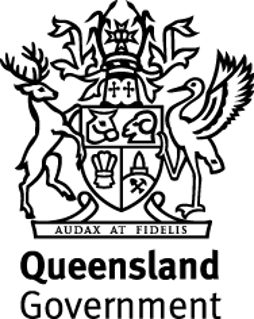|
|
Framework for the Assessment of River and Wetland Health (FARWH) – Queensland trialsCoverageThe map below highlights the areas where sampling has occurred for this program. Click on the map to view information about the drainage basins in this area. Program start dateSeptember 2007 Program end dateJune 2011 Objectives of the programThe Queensland Alignment of State and National River and Wetland Health Assessment Needs trials (FARWH) had the following objectives:
Who is involved?Lead organisationDepartment of the Environment, Tourism, Science and Innovation Contact details of lead organisation: water.monitoring♲dnrm.qld.gov.au Partner organisationsNational Water Commission List of indicators monitoredFARWH monitors and reports on aquatic ecosystem condition under six themes:
The selection of specific sub-indices within these themes is non-prescriptive and varies according to the particular surface water management area being assessed. The sub-indices can include field collected data, gauged and modelled data, as well as information collected via remote sensing and GIS analysis. Scale of programThe primary reporting scale of FARWH is at the surface water management area, which in most cases equates to a specific river catchment. For the majority of themes, the monitoring is designed and undertaken at a site and/or reach scale. The results are then combined to produce a broad-scale assessment that is suitable for comparative national reporting. Brief description of sampling locationsThe project trialled FARWH over four different regions in Queensland: Central Queensland, South East Queensland, the Wet Tropics and Lake Eyre Basin. Within these regions following specific surface water management areas were assessed:
Frequency of monitoringThe FARWH trials were conducted as part of the national FARWH program and provided a one-off assessment of aquatic ecosystem condition. The monitoring undertaken as part of these trials was undertaken in autumn 2008 in Central Queensland, in spring 2008 in South East Queensland, in winter 2009 in the Wet Tropics and in autumn 2009 in the Lake Eyre Basin. The frequency, timing and scope of the assessments were variable due to the wide range of indicator types used and the program timelines. Where is the program reported?Results and findings from the FARWH trials were reported directly to the National Water Commission. They are also presented in the following final report Alignment of state and national river and wetland health assessment needs. ReportsQueensland: Alignment of state and national river and wetland health assessment needs Last updated: 22 March 2013 This page should be cited as: Department of Environment, Science and Innovation, Queensland (2013) Framework for the Assessment of River and Wetland Health (FARWH) – Queensland trials, WetlandInfo website, accessed 8 May 2025. Available at: https://wetlandinfo.des.qld.gov.au/wetlands/assessment/monitoring/current-and-future-monitoring/framework-assessment-river-wetland.html |

 — Department of the Environment, Tourism, Science and Innovation
— Department of the Environment, Tourism, Science and Innovation

